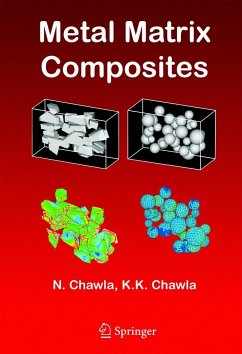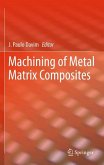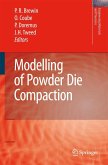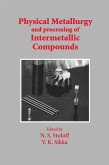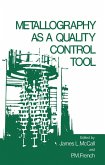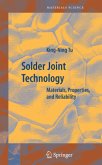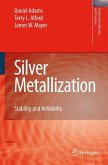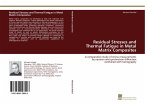In the last few years, a significant increase in applications of MMCs has taken place, particularly in the areas of automotive, aerospace, electronics, and recreation. These include continuous fiber reinforced MMCs for cables in power transmission, high temperature superconducting wires, particulate MMCs in civilian aircraft and automotive applications, and high volume fraction, high thermal conductivity substrates for electronic packaging. Nevertheless, as with any novel material systems, there is a lack of fundamental understanding on the part of practicing engineers and designers. This book would seek to address these issues, in a thorough and cohesive manner, as well as to provide students and scientists with a basic understanding of MMCs. This book will emphasize the synergistic relationships among processing, structure, and properties of metal matrix composites.
Hinweis: Dieser Artikel kann nur an eine deutsche Lieferadresse ausgeliefert werden.
Hinweis: Dieser Artikel kann nur an eine deutsche Lieferadresse ausgeliefert werden.
From the reviews:
From ADVANCED ENGINEERING MATERIALS 2006, 8, No. 6
This book is a textbook on Metal Matrix Composites (MMCs) and addresses beginning students as well as researchers and professionals who want to deepen their knowledge or catch up with new developments in this field. The book summarizes the extensive work which has been done in the last five decades. And it gives a number of examples of successful applications of MMCs in different areas of use. The interest of the authors centers around the relationship among processing, microstructure, and properties of metal matrix composites....
A comprehensive list of references is given at the end of each chapter, which is valuable for researchers who would like to get more detailed information on a specific topic. The structure of the book is very systematic, which makes it easy to follow. The text is supported by numerous figures. Experimental results are provided as well as data from modeling and simulation. As a result, the book will be interesting for newcomers as well as for practicing scientists or engineers. University teachers will find interesting information and material, which can be used for graduate courses.
"Books specifically devoted to metal-matrix composites ... have been a minority. ... this book ... has successfully filled the gap. ... The authors did a good job in presenting a rich body of up-to-date ... information. ... Throughout the book, the reader will find extensive use of illustrations to supplement the text. The illustrations are generally of good quality. ... is a valuable contribution and needed addition to the composite materials literature. It will prove very useful for students, researchers, and engineering professionals ... ." (Yu-Lin Shen, JOM - Online, December, 2005)
From ADVANCED ENGINEERING MATERIALS 2006, 8, No. 6
This book is a textbook on Metal Matrix Composites (MMCs) and addresses beginning students as well as researchers and professionals who want to deepen their knowledge or catch up with new developments in this field. The book summarizes the extensive work which has been done in the last five decades. And it gives a number of examples of successful applications of MMCs in different areas of use. The interest of the authors centers around the relationship among processing, microstructure, and properties of metal matrix composites....
A comprehensive list of references is given at the end of each chapter, which is valuable for researchers who would like to get more detailed information on a specific topic. The structure of the book is very systematic, which makes it easy to follow. The text is supported by numerous figures. Experimental results are provided as well as data from modeling and simulation. As a result, the book will be interesting for newcomers as well as for practicing scientists or engineers. University teachers will find interesting information and material, which can be used for graduate courses.
"Books specifically devoted to metal-matrix composites ... have been a minority. ... this book ... has successfully filled the gap. ... The authors did a good job in presenting a rich body of up-to-date ... information. ... Throughout the book, the reader will find extensive use of illustrations to supplement the text. The illustrations are generally of good quality. ... is a valuable contribution and needed addition to the composite materials literature. It will prove very useful for students, researchers, and engineering professionals ... ." (Yu-Lin Shen, JOM - Online, December, 2005)
-- I am familiar with the first edition of the book and have used it as recommended reading in one of my courses. Dr. N. Chawla is a recognized authority in the field of computational materials science and has conducted extensive work in the area of image based finite element analysis.
-- Metal matrix composites field is currently underserved for textbooks and reference books. A revised second edition will be great for students.
-- This will be one of the best books in the field, even better than the author's earlier book on composites.
-- The strength in this book pertains to the balanced nature taken toward elucidation of the subject for both students and professionals to learn from on a convenient basis. Unlike other books in the general field, this book is also a one-stop-pick-up-all-you-can tool for anyone doing work related to the field - this contributes to its high rank in the field, also because of the authors' significant professional reputations in the field.
-- This book is very thorough. Many books will not go into detail about crystallography, dislocation types, other basic materials science concepts, and assume the audience knows or if they don't, they will look things up. Students (undergrad and grad), post docs, researchers, and professors would all benefit from this book.
-- The book contains a lot of information. In my opinion, the work ranks among the best in the field.
-- Metal matrix composites field is currently underserved for textbooks and reference books. A revised second edition will be great for students.
-- This will be one of the best books in the field, even better than the author's earlier book on composites.
-- The strength in this book pertains to the balanced nature taken toward elucidation of the subject for both students and professionals to learn from on a convenient basis. Unlike other books in the general field, this book is also a one-stop-pick-up-all-you-can tool for anyone doing work related to the field - this contributes to its high rank in the field, also because of the authors' significant professional reputations in the field.
-- This book is very thorough. Many books will not go into detail about crystallography, dislocation types, other basic materials science concepts, and assume the audience knows or if they don't, they will look things up. Students (undergrad and grad), post docs, researchers, and professors would all benefit from this book.
-- The book contains a lot of information. In my opinion, the work ranks among the best in the field.

